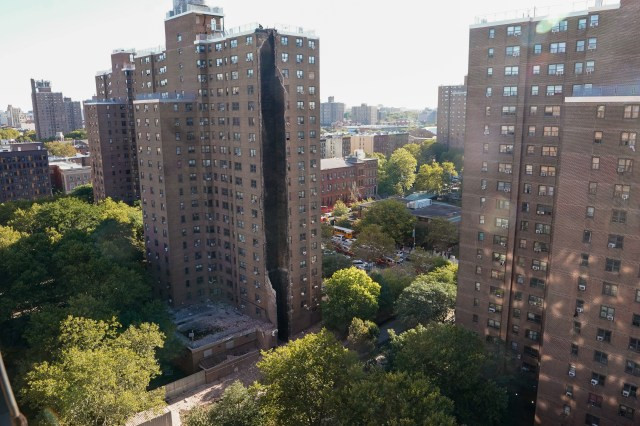In the early morning hours of October 1, a powerful gas explosion ripped through a 20-story public housing building in the Bronx's Mott Haven neighborhood, causing a dramatic partial collapse that exposed rooms from top to bottom. The incident, which unfolded around 8:10 a.m. at the Mitchel Houses on Alexander Avenue, sent debris tumbling onto the street below, but miraculously, no injuries were reported among the hundreds of residents.
Firefighters rushed to the scene after reports of a blast in the building's boiler room, where officials believe a ventilation shaft connected to the chimney gave way under the pressure. The explosion sheared off an entire corner of the structure, creating a gaping 20-story void that left twisted metal and shattered concrete in its wake. Eyewitnesses described hearing a thunderous boom that shook nearby apartments, prompting frantic evacuations as sirens wailed through the streets.
This isn't just another urban mishap; it highlights deepening worries about the state of New York City's aging public housing. The Mitchel Houses, part of the New York City Housing Authority's vast network, have long faced complaints of maintenance delays and infrastructure woes. Indeed, the timing couldn't be worse—right as colder weather sets in, leaving displaced families without heat, hot water, or even cooking gas. Moreover, city officials have suspended services in the affected 40 units, forcing residents into temporary shelters while engineers assess the damage.
However, the quick response from first responders likely averted a catastrophe. The FDNY contained the fire swiftly, and building inspectors are now poring over the site to determine if the collapse was due to a gas leak or some deeper systemic failure. Residents, many of whom have called the complex home for decades, expressed frustration over what they see as preventable risks in underfunded housing. One local, speaking outside the cordoned area, said it felt like "a wake-up call we shouldn't need."
Furthermore, this event echoes past tragedies in the Bronx, where neglect in older buildings has led to close calls before. As the investigation unfolds, the focus sharpens on how NYCHA can prevent such explosions from turning deadly. Yet, for now, the community holds its breath, wondering if this exposed hole is a symptom of broader cracks in the system.

